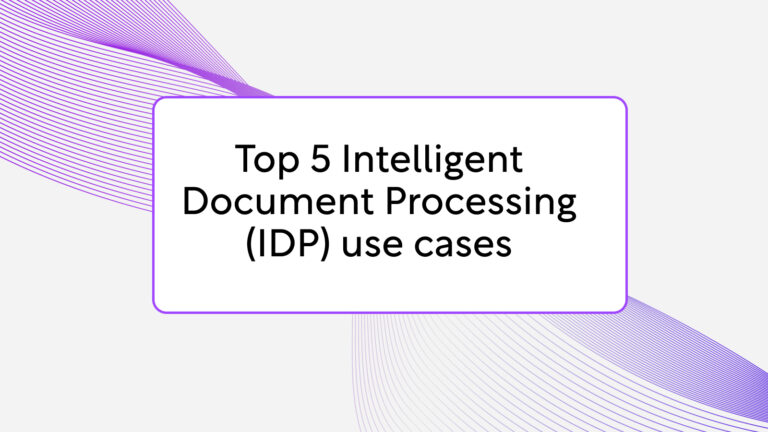My grandmother opposes most modern technologies fanatically. Of course we tried to teach her the use of modern day equipment like computers and tablets, but after a few blood-pressure elevating lessons we gave up. “You know what it is” she said after a particular frustrating session that almost brought one participant to tears “I grew up in a different time. Everything you do today is recorded and stored for ever.” What that had to do with teaching her how to look up the weather on her computer was beyond me, but soon after we decided to cease fire. It sounded like the most healthy option for everyone.
She had a good point though, with the fact that everything is recorded and stored forever. Which offers particular challenges for people like you and me who work with personnel files that are subject to strict rules on when (and how!) they should be destroyed. As said in my previous blog on how to manage employee personnel files more efficient, the employee record destruction is crucial for proper record keeping. The entire retention process might be the most time consuming in HR document management and definitely one of the most error sensitive.
To fully discuss this subject, I will have to knock on some open doors. To those who will roll their eyes while reading this, sorry in advance. But from experience I know it is necessary to say this. When you destroy a document, this means there is no way to retrieve it again. If it is completely destroyed, it means that if the queen of England together with the entire British Army tries to force you to give the document back, you are not able to comply. Destruction of documents, and indirectly proper employee record keeping, does not mean any of the following:
- Yes, I threw away the document. It is in the garbage bin over here.
- Of course, I destroyed the document, I have a back-up file though which has all the documents that were ever in the system.
- Yes, I destroyed the document…. I made a copy before though. I can keep that, right?
- Absolutely, it is gone. I took a photo though just in case I need it later.
- Almost, I put it on the pile there so I can destroy all documents together.
While most indecent retention happens with the best of intentions, we can only judge the result. If your process of destroying documents does not guarantee documents to stay private, does not lead to them not being readable anymore, enables in whatever way that the information is copied beforehand and/or is not executed within the set time your retention process is not good enough.
Now we covered that part, that isn’t as redundant as it may sound, the question remains what to do then?
The next step depends on what kind of administration you maintain, digital or physical. For now, I will leave out a mix between the two administrations, which I will discuss in a later blog. Both the digital and physical approach has its own challenges and advantages.
The old-fashioned approach – paper administration
Starting with one of the two huge advantages of paper dossiers in the area of retention management. If you set fire to a piece of paper, it is practically impossible to retrieve the information (or at least it requires a lot of patience and dedication, and I can’t imagine someone is that interested in my evaluation form from last year). When the information is gone, it is really gone. This gives an undeniable easy straight forward approach to destroying data.
Which brings us to the second huge advantage, namely trust. Especially the older generation, with all due respect, trusts more the paper trails and at the same time destruction of these paper trails. My grandmother wouldn’t believe you if you push the delete button, but burn a document and she will nod affirmative (I can’t think of a higher seal of approval than that).
But apart from all other disadvantages in paper administration, it offers several challenges in retention as well. First of all, although destroying a document means you can’t retrieve any information from this specific document, there is no guarantee that there is no copy somewhere, still containing the same information (Yes, I destroyed the document…. I made a copy before though. I can keep that right?). Whereas electronic systems regularly have options to at least show that a document is manually duplicated, such guarantee is not given for paper records.
A second disadvantage is that the process of destruction is more difficult and costlier. Identifying the documents that should be removed is already a challenge, but if you succeed there what then? You can’t just throw them away (Yes, I threw away the document. It is in the garbage bin over here). You can’t hold on to them until you can throw them all away at the same time (Almost, I put it on the pile there so I can destroy all documents together).
Some companies specialize in the destruction of documents with this kind of content, ranging from vans picking up cardboard boxes that are incinerated at a central location to heavily guarded triple reinforced trucks with armed guards picking up double plated steel boxes that are destroyed at an undisclosed and heavily guarded area. Maybe the latter is a bit overdoing it for most companies, but if you take this approach, take your time to get to know the company and the process behind it. It doesn’t only need to be safe, but it also needs to feel safe for both you and the people whose documents are subject to this process.
Another option is to destruct the documents yourself. The biggest problem being: how to destruct a document in such a way, that it is safe enough. Most standard shredders are not thorough enough for data this sensitive and installing a fire place just for employee record keeping might be a bit melodramatic. There are a lot of options available out there, each with its own price tag and level of security. Take a critical look at your process, either if you are setting it up or if you have been doing it for years in a certain way, and asses if it is (still) satisfactory.
The future is here – digital administration
The digital approach has again its own pro’s and con’s. Starting with the positive: in principle you don’t need anyone else for this. No third parties coming in your office and taking your stuff with them. No need to just trust that “they” are doing their job the right way. Digital retention management arranges it all inside a closed system. Also take into account that it is fast. No need to wait for others, but an entire process taking place in a matter of minutes, instead of days.
When properly organized, digital retention management is also automated. Limiting the room for human error, is more consistent and takes less time in general. Accidentally throwing away the wrong document, or the right document but a year too late or too early, or forgetting to check a couple of files that were at the bottom of the drawer is no longer a relevant issue. Nor is unclarity about when a document was exactly stored for the first time.
Despite these strong advantages, it would be wrong to not recognize which downsides are there to this approach. Though automated, we cannot remove the human factor completely. Accidental mistakes are reduced to a minimum, but there is still someone pushing the buttons. Even in an automated retention process, there is a point somewhere where someone needs to take a look and click on “Approve”. And even here, duplicating the information is still not impossible (Absolutely, it is gone. I took a photo though just in case I need it later). It is also possible that a document is still stored somewhere (Of course, I destroyed the document, I have a back-up file though which has all the documents that were ever in the system).
But there is something else you should take into account. Have you seen any retention management tools lately? Okay, you probably haven’t but I have and I tell you: they ain’t pretty! Difficult interfaces, complex ways to set the system up and unclear integrations with document storage systems.
ProcessMaker IDP – smart solution for HR document management
The important process of retention management has been a point of focus during the development of ProcessMaker IDP. An easy integrated solution for retention challenges with the focus on usability by normal users (like me). No solution offers the silver bullet, but we aimed to develop a system that comes as close as possible to this utopia.
Sooooooo….what do I suggest?
It may not come as a surprise to you when I tell you that I am an advocate for digitalization of sensitive data. It is crucial to keep up with the rate of development that we experience as companies. Though it is maybe difficult to get used to this new way of working, there are too many advantages that we tand to lose if we don’t embrace this change. For those who are hesitant to take the step towards this new development in their HR document management, I will close of with some comforting words. Even my grandmother, after a lot of practice, learned how to look up the weather online. This will be a cakewalk for you!





